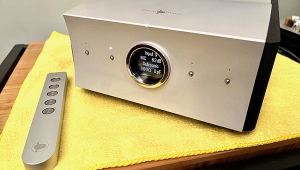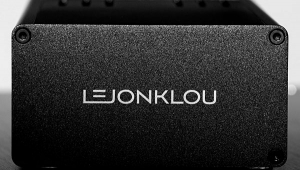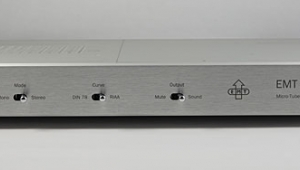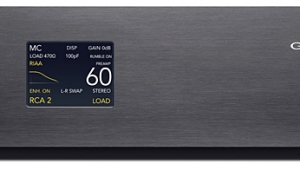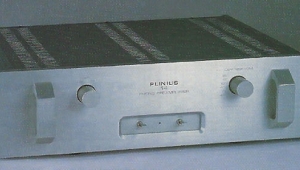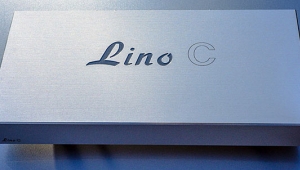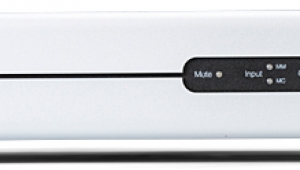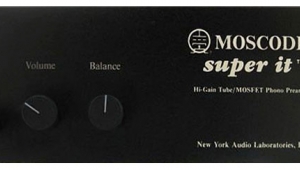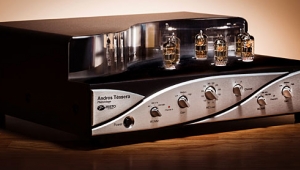| Columns Retired Columns & Blogs |
Aesthetix Rhea phono preamplifier
Trickle-down technology is a grand thing. It's comparatively easy to build an exceptional audio component when there are no constraints on technology, cost, user-friendliness, or lack thereof, but top designers are now packing more and more of the excellence of damn-the-torpedoes components into more affordable and accessible packages. Which brings us to the Aesthetix Rhea, a tubed phono preamplifier of exceptionally distinguished lineage.
Footnote 1: Hard-core maniacs can (and do) opt for a pair of mono power supplies, which transforms an Io into a three-box phono preamplifier. Extensive experience with a standard two-box Io Sig leads me to recommend that you check the capacity of your air-conditioning system should you be considering a trip down this route.
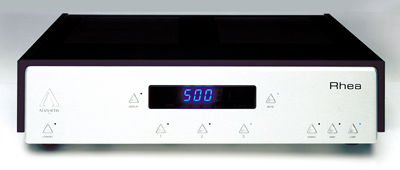
The $4000 Rhea is the direct descendant of the formidable Aesthetix Io and Io Signature phono stages, which put the California company smack in the middle of the highest of high-end phono electronics. The Io and Io Signature are huge, costly, imposing pieces, each consisting of two massive plain-Jane boxes filled with tubes (footnote 1).
They also demand some dedication and sacrifice, and not solely from the wallet. An Io takes up a huge amount of real estate, and the sheer number of tubes makes retubing a sobering thought. Aesthetix is purist to the core—even changing an Io's gain requires undoing a slew of screws and readjusting a set of jumpers inside the case. The tube-regulated power supply is potent enough to drive a 50W power amplifier, and throws off enough heat to bake a pizza.
The Ios accept no compromise and take no prisoners, but oh, they're worth the sacrifices. I have recently lived with the Io Signature, and it is sonically glorious, possessed of atomic dynamics, staggering resolution, and a sound that entices with both truth and beauty. With the Boulder 2008 and Manley Labs Steelhead, it is one of the three finest phono stages I have ever heard.
Jim White, Aesthetix's president and designer, realized that the Io preamps, wonderful as they are, are too big, too expensive, and simply too much for many lovers of vinyl who want the special something that only a tubed phono stage brings to the (turn)table. The difficult part of the equation was how to preserve most of the Io in a relatively affordable and accessible package.
So how close does this Boxster S come to its 911 Turbo sibling, anyway?
Under the Hood
Peeking inside the Rhea couldn't be easier—its damped top panel is secured with what looks like some sort of industrial-strength Velcro. Everything about the Rhea looks and feels expensive, smooth, and refined; nothing has been left to chance.
Given that Jim White's résumé includes the stellar Io Signature, it only made sense for him to adapt his well-established basics to the Rhea project. The goal was to "get as close sonically to the Io as possible," and the Rhea's circuit, based closely on that of big sis, uses five tubes per channel in a three-stage configuration in a full dual-mono application. (The power supplies and AC cord are shared, but each channel has its own entirely separate circuit board.)
According to the manual, the first stage is "a high-gain, low-noise single-ended amplifier" based on a pair of Sovtek 12AX7LP tubes. This feeds a high-gain differential amplifier, with a single Sovtek 12AX7WB tube balancing and amplifying the signal. Purely passive RIAA equalization is applied at this point, using Roederstein resistors and 1% polypropylene capacitors. Final amplification is courtesy of another Sovtek 12AX7WB operating as a differential amplifier, and the output is then differentially buffered via a Sovtek 6922. The tubes provide all of the gain; there are no solid-state amplifying devices in the signal path.
Power-supply regulation is, sensibly, solid-state, making the Rhea a much more manageable presence in the equipment rack. The power supply itself is highly sophisticated and features two separate low-flux transformers: one for the high-voltage, low-current tube supplies, the second for the low-voltage, high-current heaters. Separate windings and discrete supplies are used for each channel's heaters, and choke filtering is applied extensively. Nichicon Audio electrolytic filter caps are used, and all bypass filter caps are from Wima.
The mains switch lives around back, with a Standby switch on the front panel. In Standby, power is maintained to all of the Rhea's solid-state components, but only when the Standby switch is triggered does power ramp up, gradually, to the tubes. The Rhea will be especially interesting to those who run multiple turntables, or multiple tonearms simultaneously on one 'table: the rear panel holds three inputs, selectable from the distinctive little pyramidal switches under the front-panel display. Balanced and RCA output jacks are provided.
Footnote 1: Hard-core maniacs can (and do) opt for a pair of mono power supplies, which transforms an Io into a three-box phono preamplifier. Extensive experience with a standard two-box Io Sig leads me to recommend that you check the capacity of your air-conditioning system should you be considering a trip down this route.
- Log in or register to post comments
